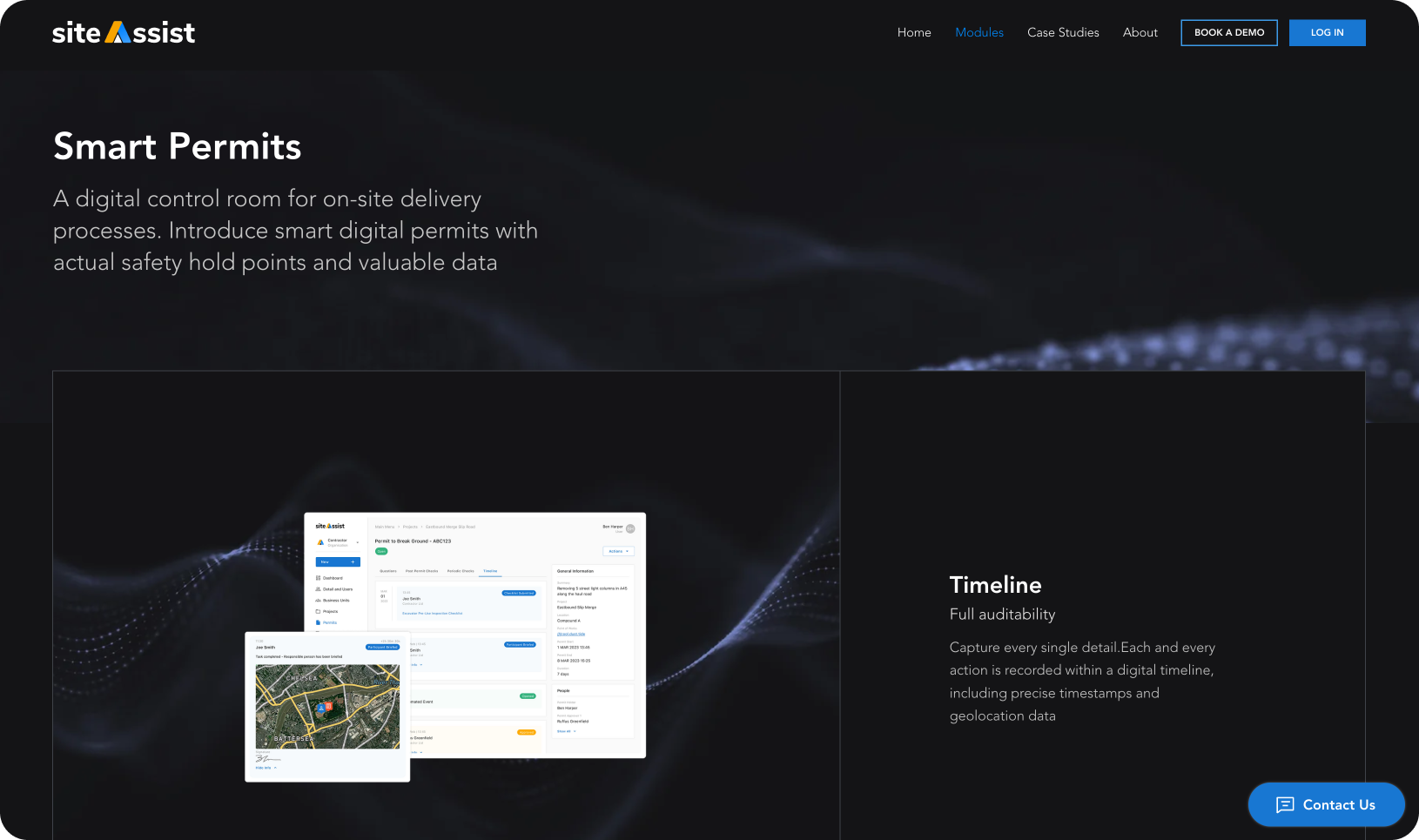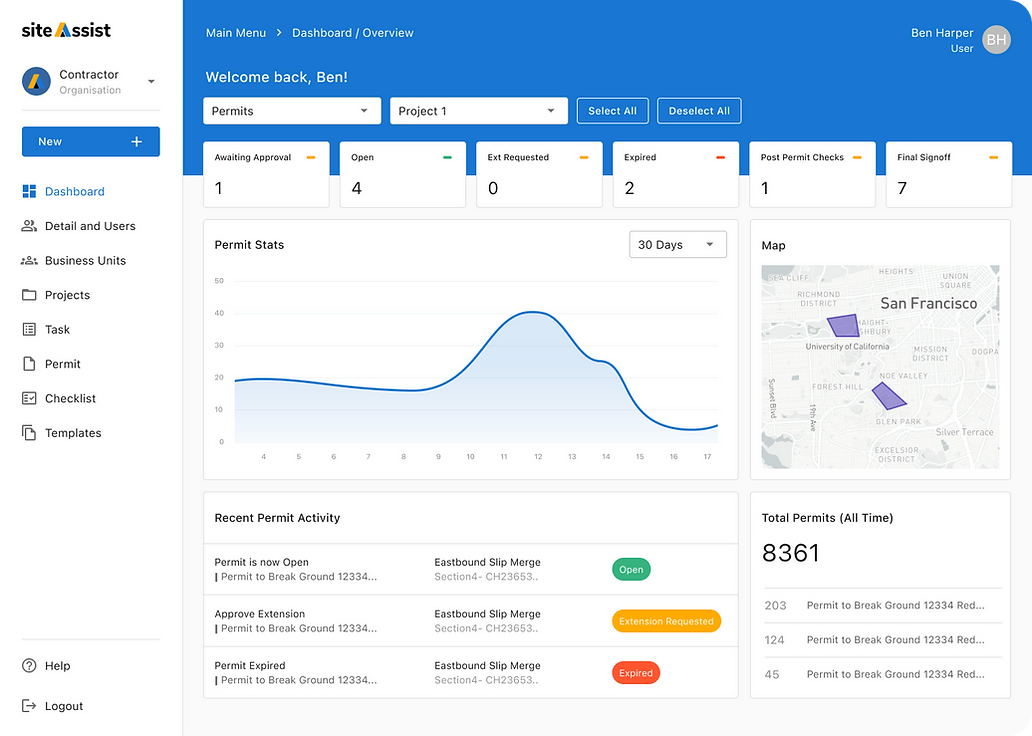Enhancing collaboration behind SiteAssist's Smart Permits

SiteAssist's Smart Permits have allowed major construction players to minimize margin of errors, improve traceability and documentation by issuing thousands of digital permits for them. They have developed a purpose-built software in collaboration with the industry, with live updates, precision mapping and AI features. Neurotic was called to intervene on this feature-rich solution to improve the overall agility and collaboration between developers and UX/UI designers during their last product shipment.

The planning phase : interviews and testing
Our first priority was to develop a comprehensive understanding of the situation in which SiteAssist operates, paving the way for informed decision-making and strategic planning throughout the project lifecycle.
We started by documenting all possible processes in the paper permit issuing journey and tested many success and failure scenarios. This allowed us to identify the key user flows that could accelerate the issuing of a Smart Permit. We also conducted comprehensive stakeholder interviews to gather insights into user needs and pain points. By talking with SiteAssist's teams and some end users, we gained a complete understanding of the challenges they faced with the existing solution, and what their main needs were.
The execution phase : a brand new work methodology
In the execution phase, we emphasized the importance of fostering a culture of continuous communication and feedback exchange between developers and UX/UI designers. Through regular stand-up meetings, sprint reviews, and design critiques, we promoted transparency and alignment across both teams.
With a group of 10 engineers we established a precise work methodology to help the UI/UX designers effectively deliver assets for the software team to code, test and deploy while satisfying the end users' needs. We used a number of tools that allowed the developers to report progress and deliver UI/UX resources in a timely fashion to have a perfect orchestration of design, deploy and request cycles.
Key take aways
One significant takeaway from our intervention with SiteAssist was the importance of planning in streamlining processes. By thoroughly documenting the paper permit journey and exploring various scenarios, we were able to pinpoint critical user flows, improve efficiency and collaboration.
Our experience with SiteAssist also emphasized the value of employing appropriate tools and methodologies to facilitate cooperation between developers and UX/UI designers. Implementing a structured work methodology and new tools for progress tracking and resource delivery proved useful in balancing design, deployment, and request cycles effectively. In other words, when done right, technology can foster synergy and synergy can improve a product!


